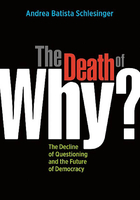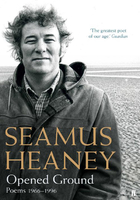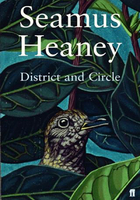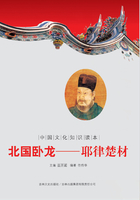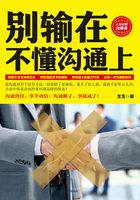Alex Almost Kills a Pack of Cyclists
On a cloudy morning several years ago, Alex was driving on Highway 1 in Marin County, California, a serpentine road along the ocean cliffs. His mind was elsewhere. His company was about to make an urgent product and deal announcement in the week ahead, and the fallout had erupted into a weekend of back-and-forth rapid-fire messages. The entire senior executive team was included on e-mail threads and texts, and Alex felt that he was expected to reply quickly.
The iPhone mounted on the dashboard of the car kept buzzing. Alex knew how dangerous it is to look at a phone while driving, let alone while driving on this stretch of highway, but he couldn't stop his hands from picking up the phone to snatch pieces of messages whenever the curves briefly abated and the road straightened out. He knew well that he could have chosen instead to stop at a pullout. Even so, he kept on driving.
On a straight section of highway, as he was furtively tapping a reply, a sixth sense told Alex to look up. What he saw, less than fifteen feet away, was a pack of cyclists in bright red clothing, frantically pedaling up the steep grade. Alex hit the brakes, and the car skidded to a rapid stop. As Alex sat in his car, heart thumping, he realized that the cars behind him were honking. It was a narrow road, and on this stretch of it, only a narrow guardrail separated the cyclists from the cliff. Two seconds longer, and he would have hit the group, injuring them and potentially pushing them off the cliff to their deaths. Had that happened, Alex realized that he could well have ended the lives of the cyclists and scarred those of their families. Children might never have seen their mothers and fathers again. More selfishly, Alex also might have lost his job, put his own family under incredible stress, and forever changed his life. It was an utterly stupid, inexcusable act. It was also an utterly normal and common one: the vast majority of drivers who bring smartphones into the car interact with them while driving.[1]
Had Alex waited for twenty minutes to reply instead from his final destination, would it have mattered? He knew that it wouldn't have. Yet the pull was so strong and the risk so abstract that Alex, normally a clearheaded and responsible person, made a bad decision—and avoided unthinkable consequences by mere seconds.
Over the years, Alex had felt a growing unease over how his relationship with technology was influencing his behaviors. As a child, a teen, and later a university student, he could read a book or write on topics for hours on end. Then along came the web and e-mail, invaluable tools for a writer trying to build a career as a freelance writer and later as an editor at Businessweek. So Alex came to rely heavily on both tools to help him more efficiently locate information and talk with sources. But the habit of checking e-mail gradually became an unhealthy compulsion. Over time, from checking it every few hours, he came to check it hourly, and then every fifteen minutes. After all, he told himself, he never knew when an editor was going to e-mail with a request or when a source might respond to a question. He was in the news business.
One day, Alex realized that he needed to be connected to the Internet in order to write at all; he just felt strange when not connected. When connected, he could, as he saw it, write and research at the same time. But this also enabled him to continuously check e-mail and social media and to surf the web, diving down rabbit holes of useless information that popped up in his searches. Always a fan of notifications, Alex loved to be constantly accessible to colleagues and clients.
That said, when he was on vacation, Alex found it hard to slow down and unwind. He felt antsy when not connected, and connecting to airport Wi-Fi after a long journey became a quasi-religious experience. Once, he had laughed at the passengers who checked e-mails as soon as the wheels hit the runway; now, he had become one of them. His parents, his wife, and his children had all become used to the fact that Alex never really took his vacations—at least, not from the Internet.
During one of those vacations, on a beautiful island off the coast of Massachusetts, Alex decided to tally up how he was spending his time on line and how much of that time was going toward work. The catalyst for this was an innocent question from his son: did Alex have time to go to the beach that day, or did he need to keep doing work on his computer? The question had struck home. Alex was choosing to sacrifice precious moments with his family that he would never recover—and the memories of one another that he and the children would never have—for the sake of time on the Internet e-mailing and doing research for work. He suspected that the “work” was probably less than 50 percent of the time he was spending; that checking e-mails and reading news articles took him on a wandering path of distractions that stole his time.
So Alex got a notepad and, every thirty minutes, wrote down what he had done in the previous half hour. At the day's end, he tabulated how he had spent his time on the computer. He found that less than one-third of his time on line actually went to work tasks; the rest was spent in vapid minutes and hours of surfing, replying to e-mails, and doing other things that didn't need to be done on a beautiful summer day while his children were at the beach. Technology, he concluded, had turned him into the kind of person he did not want to be. He vowed to gain control of the monster.
Vivek Nearly Dies from E-Mail Withdrawal
To say that Vivek nearly died from e-mail withdrawal overstates the case, of course, but only by a little. Vivek grew up programming computers and immigrated to the United States to work in technology. As he ascended through the ranks at large financial institutions, and as the Internet grew in importance, he launched two start-ups and took one public. A natural networker, Vivek used technology to build a massive web of friendships and connections across business, media, and government. Maintaining that web of connections, however, took a considerable amount of energy.
Vivek's hometown paper published a full-page paean—titled “Viva, Vivek!”—to Vivek's relationships with his employees. Behind the scenes of this success, though, even as he juggled the tasks essential to managing a growing start-up with two hundred employees and closing multi-million-dollar deals, Vivek was spending ever more time feeding his network. And juggling all of this meant—he thought—staying constantly connected.
On a vacation cruise with his family to Cancun, Mexico, Vivek felt compelled to check his e-mails and his texts. His company was going through a difficult patch because of a downturn in the economy, and Vivek consequently felt distressed and miserable, even on vacation. What Vivek wanted, first and foremost, was access to e-mail so he could know what was going on and not miss anything. His wife, Tavinder, tried to tell him to slow down, not to worry, and to relax. He knew that he shouldn't check his e-mails. And in fact he couldn't: compounding his stress and frustration, the ship's computer systems weren't working.
Then Vivek started to feel chest pains. At first he ignored them. As he climbed the pyramid of Chichén Itzá, in the Mayan ruins on Mexico's Yucatán Peninsula, the pains became increasingly severe, and he began to feel nauseous. The views were stupendous. People dreamed for their whole lives of visiting this location and walking up these steps. Yet, amid the majesty of one of the greatest civilizations ever, Vivek's focus was his wish to connect to the Internet.
On the flight home, the chest pains and nausea turned into a shooting electric current in his left arm, and Tavinder insisted he go to the doctor. Even then, Vivek said he needed to first go home to check his e-mail.
Fortunately, Tavinder prevailed; once they landed, she drove him directly to the hospital at the University of North Carolina. Vivek blacked out as he entered the emergency room, and sat propped up in a wheelchair as they registered him. His next memory was of waking up after lifesaving surgery. Had he waited another hour or two, his doctors told him, Vivek would have been dead; none of his e-mails would have mattered. Over the course of the cruise and on the flight home, he had been having a massive heart attack, which caused permanent injury to his heart.
It is impossible to precisely apportion the blame that e-mail and other technologies share for this, but Vivek is sure that the stress of feeling the need always to be digitally connected played a major role in his heart attack. The ceaseless need to feed the technology monster had subverted Vivek's awareness of the need to properly care for himself.
Vivek recovered and got off the corporate and start-up treadmills. He changed professions, from technology CEO to academic professor and researcher. His life goal became to educate and inspire others to make the world a better place. He gave up the pursuit of initial public offerings (IPOs) in favor of the pursuit of knowledge. He also began to learn about mindfulness. He started meditating, exercising, and hiking. It may sound clichéd, but he had realized that the old way of life—one of technology-induced stress—would kill him.
Though he now viewed technology with some caution, Vivek remained enthralled with its remarkable potential. Technology wasn't entirely bad, he knew. He believed that it had the potential to solve the world's greatest problems: hunger, thirst, lack of shelter, disease. In his native India, for example, technology was improving the lives of hundreds of millions of people by letting them communicate, giving them access to financial services, and making health care more affordable. Despite his love–hate relationship with technologies that demand attention (social media and e-mail), he knew that he had neither the desire nor the ability to entirely stop using them. He needed Twitter, Facebook, and LinkedIn to communicate with a broad group of followers around the globe, who even now share ideas with him and connect him with interesting people along the way. He wasn't about to give up e-mail and return to snail mail.
Still, Vivek recognized a building tension, a conflict with the happiness and mindfulness he felt when he took a break from technology on his hikes in nature or on vacations without smartphones. That conflict, he realized, reflected a false choice.
Vivek began to take note of the various ways in which technology was separating him from the people he cared about. He noted that he often sent text messages to his sons instead of speaking to them, even if they sat in the next room. He noted that he spent less time with old friends and felt satisfied sending them e-mails. Broadly, he found that he had begun to avoid speaking on the phone unless it was entirely necessary. In fact, he sensed that technology had made him less patient and less willing to wait: less empathetic.
How Technology Hacks Our Happiness
In this book, we dive deeply into what caused the unhealthy behaviors that became our normal state of existence for many years. We are both seasoned technology executives who have been immersed in technology since our earliest years. We both spent time programming computers in our youths in the early days of PCs. Both of us were early adopters of the Internet. Vivek built two software start-ups and worked as both a programmer and a senior technology executive at a major investment bank. Alex began his career in journalism covering technology before going to work for a series of technology start-ups and companies, including one, Mozilla, that develops browsers and seeks to maximize consumer consumption (as do all browsers and nearly all phone and web applications).
We have both been wary of the impacts of technology on our lives yet helpless to control our relationship with it—which included compulsive checking of social media or e-mail, texting while driving, and watching specific queries on Google or YouTube digress into random excursions across the Internet. And in the back of our minds, we have both started to wonder whether what others perceive as our diminished patience and what we perceive as diminished empathy may reside in subtle but critical changes in the way our brains function as a result of our constant immersion in technology. (And research findings that use of the technology leads to changes in physical brain structure—see below—give such concerns a strong basis.)
We know that we may come across as grumpy quasi-Luddites lecturing millennials and Generation Z on how messed up their lives are and how technology is destroying their generations. That isn't our intent. In many realms, as we acknowledge, technology has made our lives significantly better and emotionally richer by giving us amazing, unprecedented ways to connect. Alex and Vivek both continue to use technology to communicate with their children and spouses. Truth be told, we have both been hypocrites, simultaneously lecturing our children and others on the negative impacts of technology (and in Alex's case, restricting its use in his home) while using technology in the same destructive fashion we speak against because its value remains undiminished in our eyes.
Rather, we want you, our reader, to think about this: technology is not always a benign, innocuous device with a screen that we can turn on and off when we want to. The companies that make technology—software and hardware—have their own reasons to command our attention, and their means of doing so are not confined to traditional tools of manipulation. The artificial intelligence they deploy seeks increasingly to surreptitiously guide our movements and thoughts, outsmarting us and influencing us in subtle ways to do the companies' bidding (Click on more ads! Like more posts! Don't leave, ever!). These companies employ brilliant mathematicians and data scientists to persuade us to use their offerings—generally meaning spending significant time and attention.
We are encouraged that so many in the tech sector seem to be waking up to the dangers long foreseen by visionaries such as Steve Jobs and Bill Gates (both of whom severely restricted their children's use of technology even as their companies sold their products aggressively to schools and children). But the current corporate demand for our increasingly scarce attention, in what has been dubbed an “attention economy,” is designed to translate our time into income for corporate coffers. This is why Facebook, Google, and all other companies that traffic in messaging, social networking, browsing, and similar activities measure their success in amount of time spent per user, or in the number of actions a user takes (Likes, searches, clicks, tweets). When that number rises over time, investors are usually happy. When it falls, or even when it rises too slowly, someone's job is at risk—laying even more painfully bare the reality that technology companies are primarily (no surprise) in it for the money. Of course, we knew that. But we also listened to high-minded language about “connecting the world” and “organizing all the world's information.” For a long time, we gave those companies a free pass. It's time for us to wake up and examine, gimlet eyed, every interaction we have on line and to think hard about how and when technology commands our attention—and, most importantly, to what end.
In seeking to reduce our choices, attention-economy companies limit our ability to choose for ourselves. This is how they control the game and tilt the scale in their favor, and this is why the news and information appearing to us on social-media sites exclude information that might challenge our worldviews. This is also why search results today favor larger companies and stores over the family-owned neighborhood stores that sponsor our local sports teams, pay property taxes, and give back directly to our communities. Though the big chains can pay for our attention, the small stores can't afford to. And so technology is nudging us toward choices with long-term implications for our communities—which, with every click, we remake in the image that the tech giants desire.
As well as affecting our immediate relationships with technology, these restrictions in choice have secondary and tertiary impacts. A growing body of research shows that technology exposure diminishes empathy.[2] A strong correlation has also been found between the increase in use of technology and a reduction in book reading.[3] Given the nature of our world and of this kind of technology, that trend may seem logical and benign. But reading books has long been associated with numerous positive human outcomes in education and in life. So anything that leads to a reduction in book reading should be weighed carefully for its positive and negative effects over the long term. A growing body of evidence suggests that people remember and learn more from offline reading than from reading on electronic devices.[4]
The technology we use may also be changing the physical structure of our brains.[5] Geospatial perception, for instance—map-reading ability and spatial awareness—may be taking a hit from the nearly universal adoption of GPS in smartphones and other devices. Early evidence indicates that this may result in a reduction in the size of the hippocampus in the brain, which plays critical roles in memory formation, learning, and happiness. We simply don't yet know what all the long-term impacts of this change will be.
The brain's plasticity makes it amazingly adaptable, and this adaptation may well help us deal with modern life. It may free up the hippocampus for tasks more urgent than those we can outsource to Google Maps. But choosing not to think about such matters is a way of ceding our choice and free will. Much as Daniel Kahneman considers two types of happiness and two types of thinking in his seminal book Thinking, Fast and Slow, we need to consider the impacts of technology in multiple ranges: the immediate direct impacts, the immediate or near-term secondary impacts, and the longer-term impacts.[6]
Fitness trackers are a case in point. A few years ago, these devices were almost universally hailed as a simple, effective way for technology to drive healthy behaviors. Creating a reward structure for activity and movement, and taking advantage of the same psychological incentives (discussed in chapter 1) that drive us to continually track our social media feeds to constantly track our step counts should be good for humankind, right?
It turns out that humans adapt fairly quickly to fitness trackers and compensate for the step counts in unforeseen ways. A 2016 University of Pittsburgh study put 470 people on a low-calorie diet to lose weight.[7] Some of the participants were given fitness trackers, and others were not. After two years, participants who had worn fitness trackers had lost less body mass than those who had not. What had happened? People who used fitness trackers justified eating more on days when the fitness trackers recorded more exercise. Relying on external technological feedback in lieu of hunger signals, users of these devices ate more than they otherwise would have.
Another study, this time using fitness trackers and calorie counters in conjunction, gave mixed feedback on the devices.[8] Some participants reported improved restraint in eating, but others reported that the use of activity-tracking and calorie-counting technology increased symptoms of eating disorders.
This is a recurrent theme in this book: some people handle technology better than others, which is why a one-size-fits-all approach is wrong for technology usage. As these examples show, our relationship with technology is complicated, and the effects can rarely be seen in black and white. What is different and more urgent now is the rapid adoption that the newest technology systems have enjoyed. Fitness trackers went from fringe to nearly mainstream in less than five years in the developed world. Smartphones had become mainstream in slightly more than a decade, and the Internet took longer than that. Smart speakers, such as Google Home and Amazon's Alexa-powered Echo, are being adopted more quickly than smartphones or fitness trackers; these speakers bring an entirely new way for us to interact with technology.[9] Today, we may be on the cusp of embracing and entering another rapid-adoption cycle: that of virtual reality and augmented reality (VR/AR).
More than any other human–computer interface introduced to date, VR/AR, with which we will interact through multiple senses, has the potential to overwhelm our defenses and become highly addictive. The web between technology and our senses is tightening. Even now, Elon Musk, perhaps the greatest technology entrepreneur of our time, is building products to directly link our brains to technology, bypassing fingers, voice, and other physical command structures.[10] These are uncharted waters, and we urgently need an understanding of the three ranges of technology impact on humans (immediate direct effects, immediate to short-term secondary effects, and longer-term effects), and of the positives and negatives of every new rapid-technology cycle.
We, Vivek and Alex, believe that this boils down to a question of conscious choice. Technology that augments our choices, or that we use in such a way as to broaden them, will augment our free will and our fulfillment. Technology that surreptitiously reduces our choices, that seeks to constrain us rather than vice versa, will limit and reduce them. We also keep in mind the paradox of choice: the poverty of riches that is yet another facet of modern technology (for more on which, see chapter 3). Addressing the importance of choice by simply increasing the number of options to choose from doesn't acknowledge the way our psyche functions. Rather, we frame the goal as maximizing both conscious choice and our ability, as thinking citizens of the world, to define our choices, define our lives, and, in doing so, regain control, living intentionally and so becoming happier and more productive.
That is the goal of this book: to build a different way for us to think about technology.
In our previous book, The Driver in the Driverless Car: How Our Technology Choices Will Create the Future, we posed three questions to ask of any new technology:[11]
? Does it have the potential to benefit everyone equally?
? What are the risks and the rewards?
? Does it foster autonomy or dependency?
In this book, we take the next step and ask questions (and provide some answers) as to how we can regain control. Our society must learn to maintain our relationship with technology on terms that make it, on balance, a positive set of tools, maximizing the wonderful things technology can do for us and minimizing the harms it inflicts. All of us, millennials and baby boomers alike, can benefit from a healthier relationship with technology. Our aim in this book is to help bring that about.
注释:
[1]Noah Budnick, “Largest distracted driving behavior study,” Zendrive 17 April, (accessed 2 February 2018).
[2]David Comer Kidd and Emanuele Castano, “Reading literary fiction improves theory of mind,” Science 2013;342(6156):377–380, (accessed 2 February 2018).
[3]Victoria Rideout, Children, Teens, and Reading: A Common Sense Media Research Brief, San Francisco: Common Sense Media, 2014, teensand reading-2014pdf/download (accessed 2 February 2018). American Academy of Arts and Sciences, “Youth reading for fun,” Humanities Indicators January 2016 (accessed 2 February 2018), (accessed 2 February 2018). “Results from the Annual Arts Basic Survey (2013–2015),” National Endowment for the Arts August 2016, (accessed 2 February 2018). Margaret K. Merga and Saiyidi Mat Roni, “The influence of access to eReaders, computers and mobile phones on children's book reading frequency,” Computers & Education 2017;109:187–196, (accessed 2 February 2018).
[4]Naomi S. Baron, Words Onscreen: The Fate of Reading in a Digital World, Oxford: OUP, 2015, (accessed 2 February 2018). Anne Mangen, Bente R. Walgermo, and Kolbj?rn Br?nnick, “Reading linear texts on paper versus computer screen: Effects on reading comprehension,” International Journal of Educational Research 2013;58:61– 68, (accessed 2 February 2018).
[5]Perry W. Thorndyke and Barbara Hayes-Roth, “Differences in spatial knowledge acquired from maps and navigation,” Cognitive Psychology 1982;14(4):560–589, (accessed 2 February 2018). Ginette Wessel, Caroline Ziemkiewicz, Remco Chang, et al., GPS and road map navigation: The case for a spatial framework for semantic information, Rome: Advanced Visual Interfaces '10 conference presentation, 2010. Lin Edwards, “Study suggests reliance on GPS may reduce hippocampus function as we age,” Medical Xpress 18 November 2010, (accessed 2 February 2018). Katherine Woollett and Eleanor A. Maguire, “Acquiring ‘the Knowledge’ of London's layout drives structural brain changes,” Current Biology 2011;21(24):2109–2114, Stefan Münzer, Hubert D. Zimmer, and J?rg Baus, “Navigation assistance: A trade-off between wayfinding support and configural learning support,” Journal of Experiential Psychology Applied 2012;18(1):18–37, (accessed 2 February 2018). Toru Ishikawa and Kazunori Takahashi, “Relationships between methods for presenting information on navigation tools and users' wayfinding behavior,” Cartographic Perspectives 2013;(75):17–28, (accessed 2 February 2018). John Edward Huth, The Lost Art of Finding Our Way, Cambridge: Harvard University Press, 2013. Amir-Homayoun Javadi, Beatrix Emo, Lorelei R. Howard, et al., “Hippocampal and prefrontal processing of network topology to simulate the future,” Nature Communications 2017;8:14652, (accessed 2 February 2018). Leon Neyfakh, “Do our brains pay a price for GPS?” The Boston Globe 17 August 2013, (accessed 2 February 2018).
[6]Daniel Kahneman, Thinking, Fast and Slow, New York: Farrar, Straus and Giroux, 2011.
[7]John M. Jakicic, Kelliann K. Davis, Renee J. Rogers, et al., “Effect of wearable technology combined with a lifestyle intervention on long-term weight loss: The IDEA randomized clinical trial,” JAMA 2016;316(11):1161–1171, (accessed 2 February 2018).
[8]Courtney C. Simpson and Suzanne E. Mazzeo, “Calorie counting and fitness tracking technology: Associations with eating disorder symptomatology,” Eating Behaviours 2017;26:89–92, doi.org/10.1016/j.eatbeh.2017.02.002 (accessed 2 February 2018).
[9]Thuy Ong, “39 million Americans reportedly own a voice-activated smart speaker,” The Verge 15 Jan 2018, (accessed 2 February 2018).
[10]Dana Hull, “Elon Musk's Neuralink gets $27 million to build brain computers,” Bloomberg Technology 25 Aug 2017, (accessed 2 February 2018).
[11]Vivek Wadhwa and Alex Salkever, The Driver in the Driverless Car: How Our Technology Choices Will Create the Future, Oakland, California: Berrett-Koehler, 2017.



